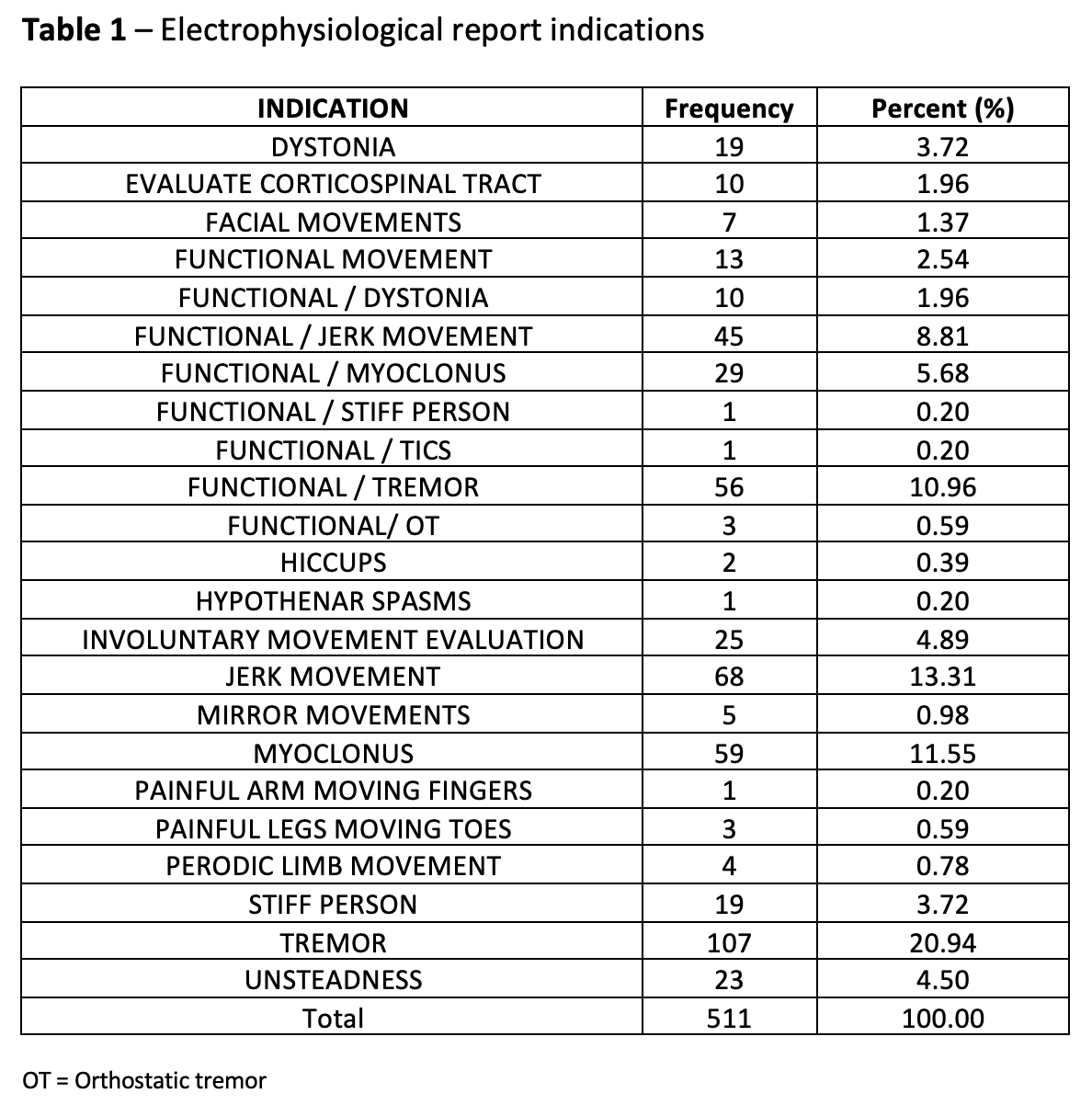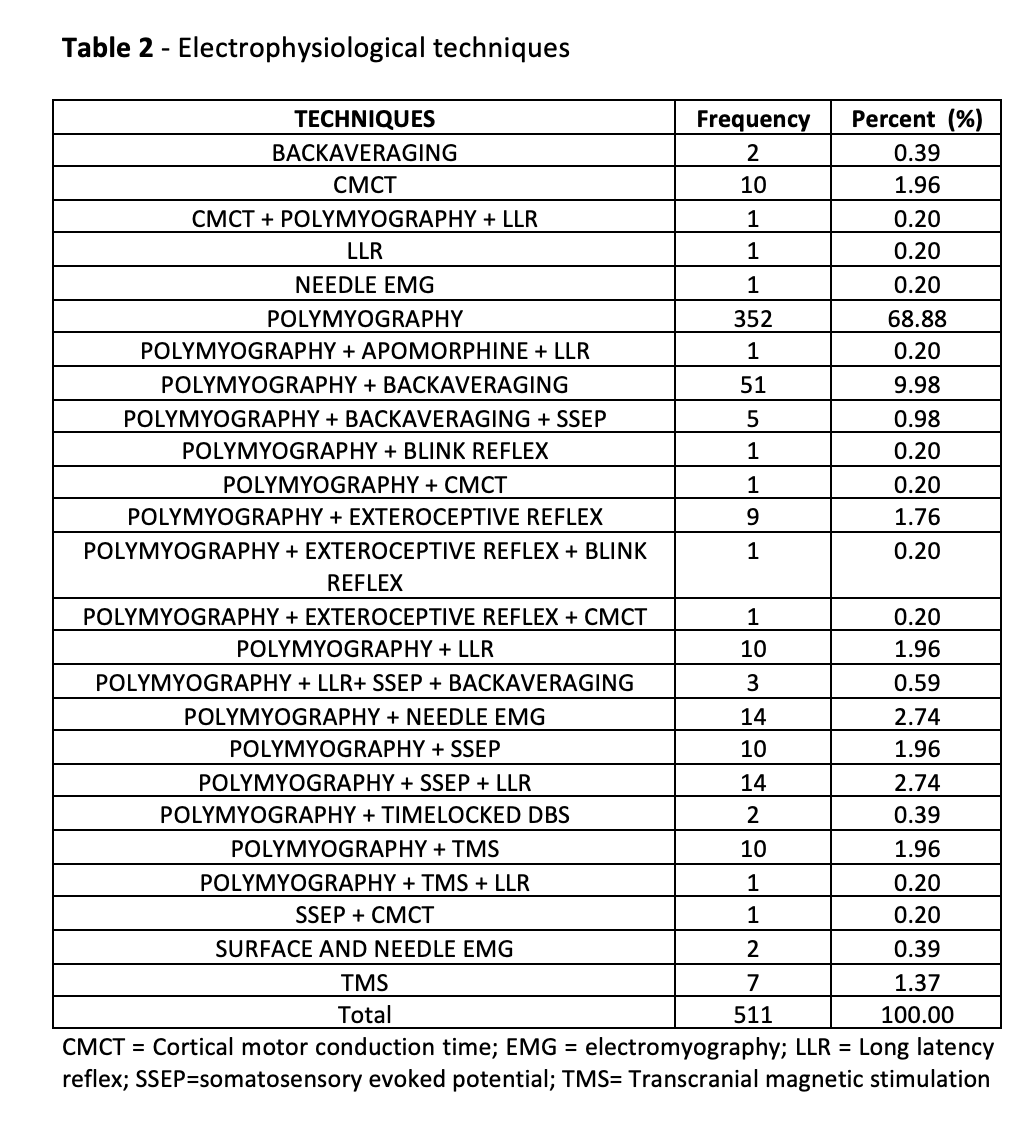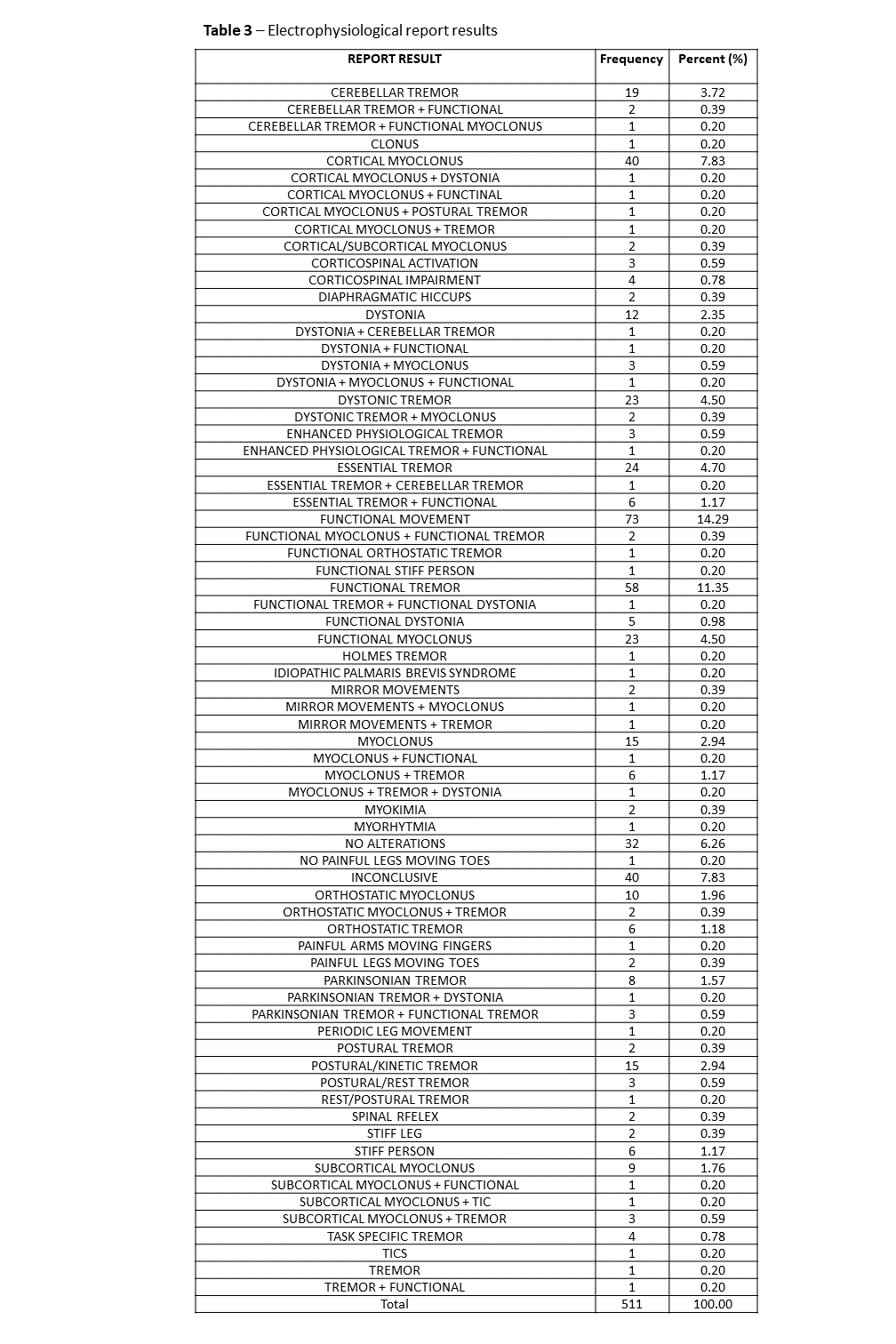Category: Neurophysiology (Non-PD)
Objective: To retrospectively evaluate the indications and final diagnoses of movement disorder neurophysiological evaluations in a specialized movement disorders centre.
Background: The use of neurophysiological methods to evaluate movement disorders is well defined for myoclonus, stiff person syndrome and orthostatic tremor (1,2,3). There is growing interest in the field, and more methods are being developed to evaluate tremor (4), especially to distinguish from functional forms (5), and other movements such as dystonia and tics (6,7). Quantitative and objective neurophysiological assessment can help to define the predominant phenomenology, and provide diagnoses that have prognostic and therapeutic implications.
Method: Electrophysiological reports from 2003 to 3/2021 were reviewed. The indications were classified according to predominant phenomenology and the diagnosis of each study was categorized in subgroups of each phenomenology.
Results: A total of 511 reports were evaluated. The mean age of patients was 51 years (range 5 – 89 years), and 51% were women. The most common indication was possible functional movement disorders (31%), followed by jerky movements (25%), tremor (20%), unsteadiness (4.5%), and suspicion of stiff person syndrome (4%). The other 15.5% are described in Table 1. Regarding the techniques applied, the most common was the polymyography alone (68%) or combined with EEG back-averaging (10%). The others are detailed in Table 2. The majority of the reports (77%) concluded that there was one movement disorder, 9% concluded that there was more than one category of movements, 8% was inconclusive, and in 6% the examination was inadequate due to absence of abnormal movements. The most prevalent diagnoses were functional movement disorder (32%), followed by cortical myoclonus (8%), essential tremor (5%) and dystonic tremor (4.5%), and the others are detailed in Table 3. The median number of examinations was 30 per year. However, 38% of evaluations occurred in the last 5 years, highlighting an increasing demand in last few years.
Conclusion: This 17-year experience showed that the neurophysiological testing can help in the diagnosis of movement disorders. More standardized techniques are required and will encourage more widespread use of neurophysiology to assist in the evaluation of movement disorders.
References: 1. Shibasaki H, Hallett M. Electrophysiological studies of myoclonus. Muscle Nerve. 2005 Feb;31(2):157-74. 2. Hassan A, van Gerpen JA. Orthostatic Tremor and Orthostatic Myoclonus: Weight-bearing Hyperkinetic Disorders: A Systematic Review, New Insights, and Unresolved Questions. Tremor Other Hyperkinet Mov (N Y). 2016 Nov 18;6:417. 3. Chen KS, Chen R. Principles of Electrophysiological Assessments for Movement Disorders. J Mov Disord. 2020 Jan;13(1):27-38. 4. Bhatia KP, Bain P, Bajaj N, Elble RJ, Hallett M, Louis ED, Raethjen J, Stamelou M, Testa CM, Deuschl G; Tremor Task Force of the International Parkinson and Movement Disorder Society. Consensus Statement on the classification of tremors. from the task force on tremor of the International Parkinson and Movement Disorder Society. Mov Disord. 2018 Jan;33(1):75-87. 5. Schwingenschuh P, Katschnig P, Seiler S, Saifee TA, Aguirregomozcorta M, Cordivari C, Schmidt R, Rothwell JC, Bhatia KP, Edwards MJ. Moving toward “laboratory-supported” criteria for psychogenic tremor. Mov Disord. 2011 Dec;26(14):2509-15. 6. Tijssen MA, Marsden JF, Brown P. Frequency analysis of EMG activity in patients with idiopathic torticollis. Brain. 2000 Apr;123 ( Pt 4):677-86 7. Vial F, Attaripour S, Hallett M. Differentiating tics from functional (psychogenic) movements with electrophysiological tools. Clin Neurophysiol Pract. 2019 Jun 28;4:143-147.
To cite this abstract in AMA style:
T. Grippe, R. Chen. Utility of neurophysiological evaluation in movement disorders clinical practice [abstract]. Mov Disord. 2021; 36 (suppl 1). https://www.mdsabstracts.org/abstract/utility-of-neurophysiological-evaluation-in-movement-disorders-clinical-practice/. Accessed April 26, 2025.« Back to MDS Virtual Congress 2021
MDS Abstracts - https://www.mdsabstracts.org/abstract/utility-of-neurophysiological-evaluation-in-movement-disorders-clinical-practice/



